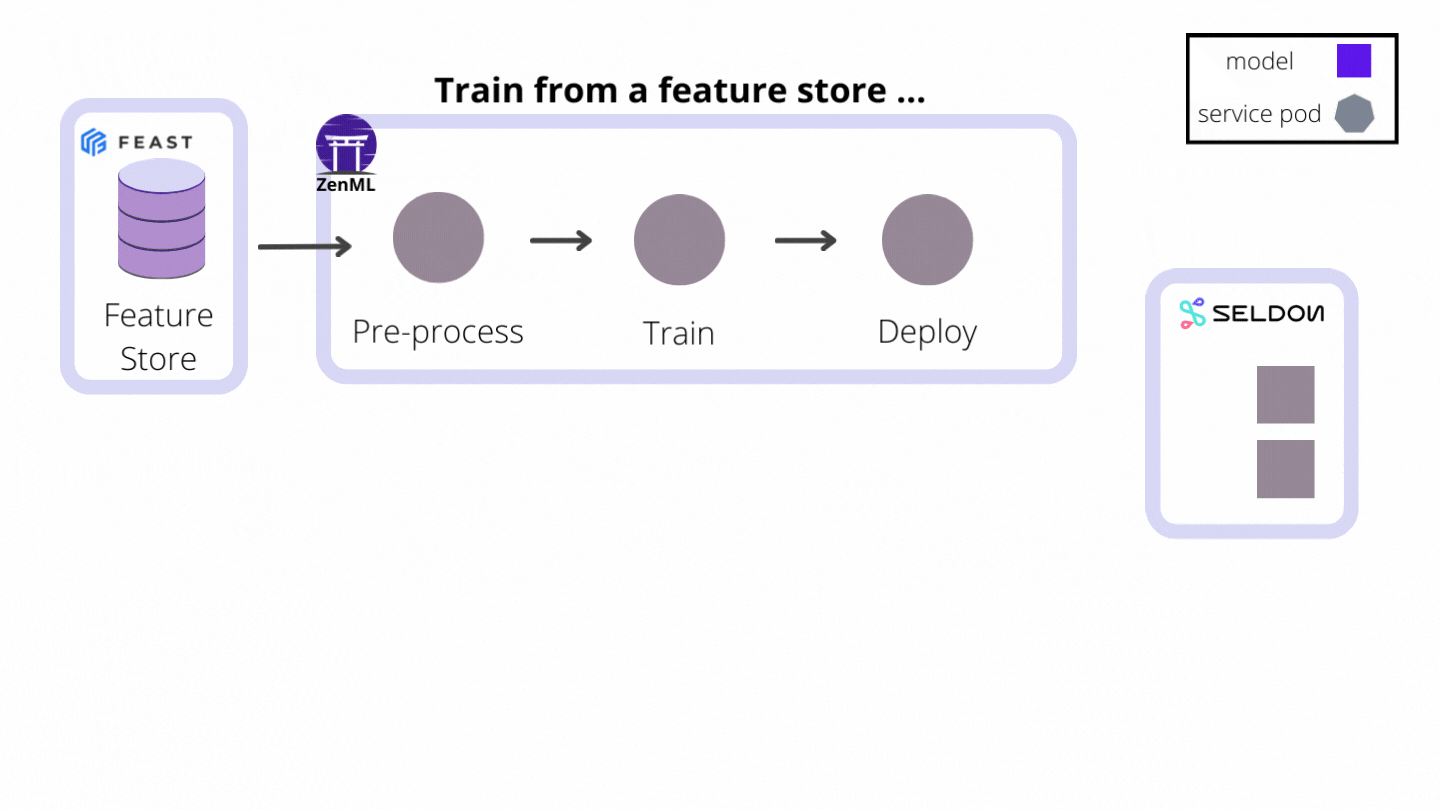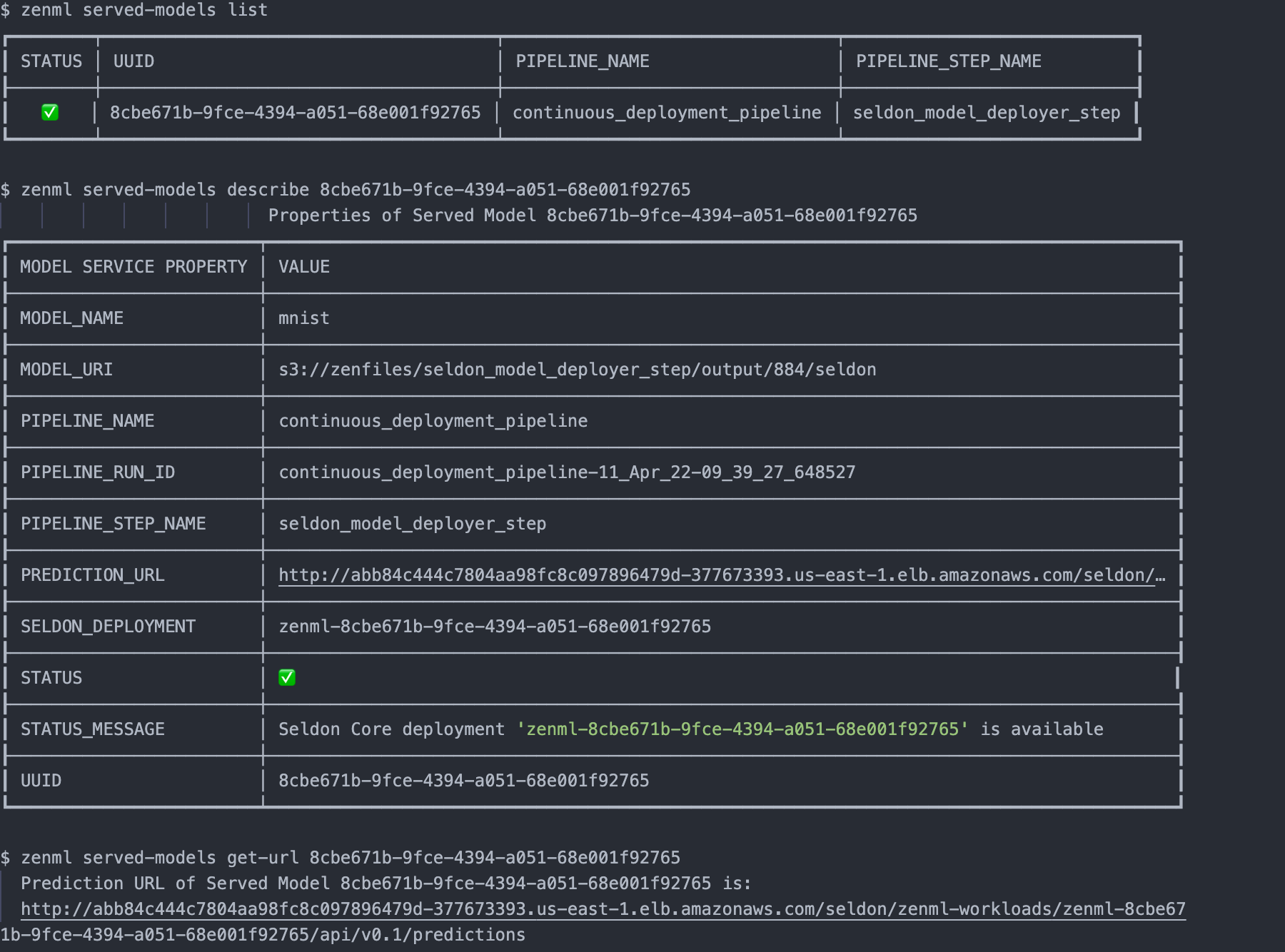
Seldon model deployer workflow, animated
- They hold all the stack-related configuration attributes required to interact with the remote model serving tool, service or platform (e.g. hostnames, URLs, references to credentials, other client-related configuration parameters)
- They implement the Continuous Deployment logic necessary to deploy models in a way that updates an existing model server that is already serving a previous version of the same model instead of creating a new model server for every new model version. Every model server that the Model Deployer provisions externally to deploy a model is represented internally as a Service object that may be accessed for visibility and control over a single model deployment. This functionality can be consumed directly from ZenML pipeline steps, but it can also be used outside of the pipeline to deploy ad-hoc models.

Example of the output from the ZenML CLI
To read a more detailed guide about how Model Deployers function in ZenML,
click here.

